By Sanjeev Sardesai
In ‘Creating the Brand Goa Chitra’, Bismarck Dias talked about how, during his initial interaction with Victor, he was forcefully warned against the project. In a similar vein, Savia Viegas calls him “Banalecho pisso bhatkar”, referring to the common perception of Victor as an eccentric man. In this brilliantly articulated piece, Sanjeev Sardesai offers a highly personal account of his own experience with the “madman.” From being intrigued, to being cautioned by his social circle, to knowing Victor Hugo and the Goa Chitra project – Sanjeev Sardesai’s account is a delight to read.
“THE GOAN WHOSE CHITRA IS CREATED BY THE CRUTI OF HIS CHAKRA”
Goa Chitra – the petite name which signifies a very original and ethnic picture of a beautiful land called Goa, with its vast arrays of display of authentic skills related to Goa’s ancient agrarian lifestyle. This amazing collection of the original souls of the primary & ethnic occupation related artefacts’ of agriculture, right from the initial step of sowing up to a remunerative reaping is the herculean effort and an arduous journey of a single individual named Victor Hugo Gomes.
Victor – an extremely simple and a respectfully humble person once you know him – was, at one point in time, a matter of pure mystification for me whenever I had the fortune of fleetingly being around him during heritage & hospitality related interactions many moons ago. His bearing was that of a typically whimsical, spectacled man-of-arts, with a very sombre air about him; however most of the invitees were always indulging in a very animated conversation with him. Wearing his typical Indo-European attire of a kurta & pants, topped with a small pony tail, which has now transformed into his symbolic long hair, just added to my intrigue.
When I made my initial attempt to delve into the identity of this gentleman, it deepened my intrigue as most of the persons informed me that he is head-strong, but starkly guileless. A few of my “well-wishers” (those who wish that I trip into a well!), even went to the extent of advising me to stay away from this crazy, head-strong young man “for my sake”! Maybe it was this one aspect that acted like a magnet, for me, towards knowing more about the endeavours of this mystic man. The more I asked, I was further more baffled.
From this one man I educated & enriched myself positively, creating a huge niche in my own life, learning from this person’s conduct. I realized that for a common man, it was easy to create a huge balloon out of a small achievement; but to embrace & create a solid foundation, piled on a subject that goes deep down to many centuries, with the barest of sustenance, and inhumane critics…. is a prodigious task. True to his name, he was a Victor!
It was then that I attempted (yes, attempted) to extend my hand to this individual called Victor. I faintly remember the first time I met this gentleman at one of the meets of the hospitality industry, in mid 1990’s, in which industry I spent most of my life. The first meeting went on very sober and ended up with a warm invite from him to visit his collection of the fast disappearing artefacts’ related to the original Goan trades, which he was initiating in the South Goa village of Benaulim. It was here that I was first connected to Goa Chitra & Victor Hugo Gomes. Victor Gomes ‘the artiste-painter’ by education and a curator of Goa’s agrarian heritage by passion.
I realised that this was a man whose passion for this beautiful Goa State was far more profound and frank than I could ever attempt to attain or achieve. But passion does not come without its negative aspects and it shows. No sincerely ‘pPassionate’ person shall allow triviality displayed or destruction of the richer, yet unknown aspects of the topic of his or her passion. Such was the case with this man! His knowledge, informed by thorough study, about the artefacts related especially to the rich heritage of our Goa could not bear the senseless indifference exhibited by the people who mattered. This indifference had led to the love of his life – the intangible heritage – the equipments & the methodology of ancient Goan farming & agriculture, to get lost in the sands of time.
I have always liked and will continue to appreciate the frank and critical yet educated views he expresses, irrespective if the same shall be received with diplomacy or with the importance that they deserve; because he believes in the issues close to him!
I recollect, that he was my first choice as a Resource Person and Speaker, when I organised the 1-Day Seminar on the topic ‘THERE IS NO TOURISM IN GOA”, in association with the NGO Goa Forgiving at Panaji. Having invited the Director of Tourism Mr. Amey Abhyankar, the Former Member Secretary Kala Academy Dr. Pandurang Phaldessai, and a well known media personality Mr. Sandesh Prabhudessai along with Victor Hugo Gomes, I was pleasantly surprised and happy that true to my understanding Victor did not mince words or dabble in the diplomacy angle. Watched by over 200 students of tourism related subjects, Victor, like a warrior on warpath ‘whipped out his sword’ from the scabbard of words and placed his scathing views – all backed with facts, bare before the other panel members. Every individual present in the hall had just one response towards him – praise!
Easier said than done. Being frank is not a regular human being’s cup of tea! My journey of knowing this once feared-to-approach person has led me to forging a bond of deep friendship with him and personally I feel honoured to be acknowledged as his friend. Today too many a person have a warped view of this spectacled, bearded & long haired man; but sadly they do not realize that they are the real losers! It was pleasant to see that this young man, fired with the urge to protect, preserve & promote the heritage of Goa, is also a promoter of literature & music; though I have not heard him sing!
My visits there have been many, but every visit enriches me further every time. Laying my eyes on his collection of artefacts related to agriculture & homes in GOA CHITRA; the scintillating and amazing palanquins, wheeled buggies, carriages & carts in GOA CHAKRA and his recent initiative GOA CRUTI consolidating & displaying the rare & disappearing heritage assets of a Goan home of yester years is an experience which I always feel rejuvenated after every visit! I feel proud as a Goan to be made aware that these consolidated priceless collections of heritage, have been praised by world dignitaries, after an enlightening visit here!
What makes these initiatives a really amazing feat on his part is that he has laid the foundation, creating his own resources, without any external assistance and only through a few donations & the entry fees.
 Sanjeev Sardesai the Primary Promoter of HANDS-ON-HISTORIANS, is a Botany Graduate and was a player in the hospitality industry for 22 years in Senior Executive designations. Having been brought up in a Goan village lifestyle, at Porvorim, he regales in documenting the ethos of the earlier eras vis-a-vis the present times, through the eyes of a transit generation citizen, between earlier dynastic rules & a democratic set-up. Being awarded the President of India Badge in Scouting, his hobbies are photography, angling, arborics and the outdoors; while his passion is being aware and to protect, preserve & promote the heritage of Goa through writings, audio-visual presentations & exhibitions.
Sanjeev Sardesai the Primary Promoter of HANDS-ON-HISTORIANS, is a Botany Graduate and was a player in the hospitality industry for 22 years in Senior Executive designations. Having been brought up in a Goan village lifestyle, at Porvorim, he regales in documenting the ethos of the earlier eras vis-a-vis the present times, through the eyes of a transit generation citizen, between earlier dynastic rules & a democratic set-up. Being awarded the President of India Badge in Scouting, his hobbies are photography, angling, arborics and the outdoors; while his passion is being aware and to protect, preserve & promote the heritage of Goa through writings, audio-visual presentations & exhibitions.
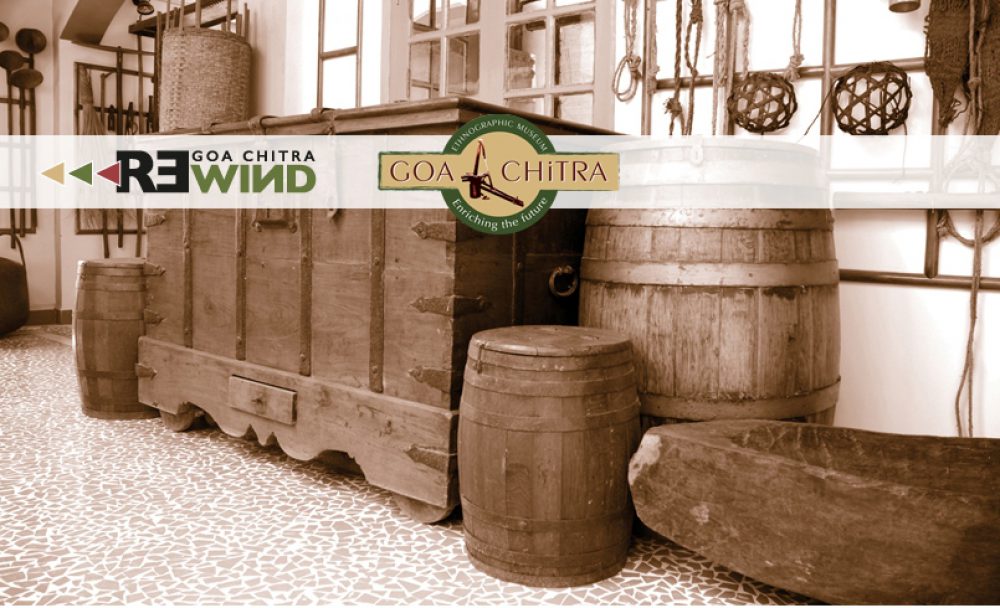
 Madhavan Pillai is the Executive Director and founder of Asia Photography Archive (APA), a not-for-profit pioneering initiative to preserve the photographic heritage of India and Asia; founder of Goa Center for Alternative photography (Goa-CAP); and Photography Consultant to CSMVS Museum Art Conservation Centre, Mumbai. Madhavan has worked as a documentary photographer, and travelled across India documenting the mining industry, its intrusion in the environment, and its effects on tribals’ lives and their culture.
Madhavan Pillai is the Executive Director and founder of Asia Photography Archive (APA), a not-for-profit pioneering initiative to preserve the photographic heritage of India and Asia; founder of Goa Center for Alternative photography (Goa-CAP); and Photography Consultant to CSMVS Museum Art Conservation Centre, Mumbai. Madhavan has worked as a documentary photographer, and travelled across India documenting the mining industry, its intrusion in the environment, and its effects on tribals’ lives and their culture.





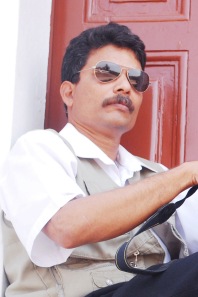 Pantaleão Fernandes is a Goa-based writer, photographer, and ethnographer. Passionate about Goa and her vibrant culture, he spends most of his time exploring villages in the deep hinterlands, to experience firsthand the warm spirit and culture of the villagers and document these experiences. These excursions brought about his earlier books, “100 Goan Experiences”, “Goa Remembered” and a children’s book “Once Upon a Time in Goa”. His latest ethnographic book, “Traditional Occupations of Goa” is a rich documentation of the ancient crafts of Goa — a significant part of her intangible culture and heritage. Currently he scours the Goan villages, for hidden cultural stories which he tells with his documentary films entitled “Untold stories from Goa”.
Pantaleão Fernandes is a Goa-based writer, photographer, and ethnographer. Passionate about Goa and her vibrant culture, he spends most of his time exploring villages in the deep hinterlands, to experience firsthand the warm spirit and culture of the villagers and document these experiences. These excursions brought about his earlier books, “100 Goan Experiences”, “Goa Remembered” and a children’s book “Once Upon a Time in Goa”. His latest ethnographic book, “Traditional Occupations of Goa” is a rich documentation of the ancient crafts of Goa — a significant part of her intangible culture and heritage. Currently he scours the Goan villages, for hidden cultural stories which he tells with his documentary films entitled “Untold stories from Goa”.




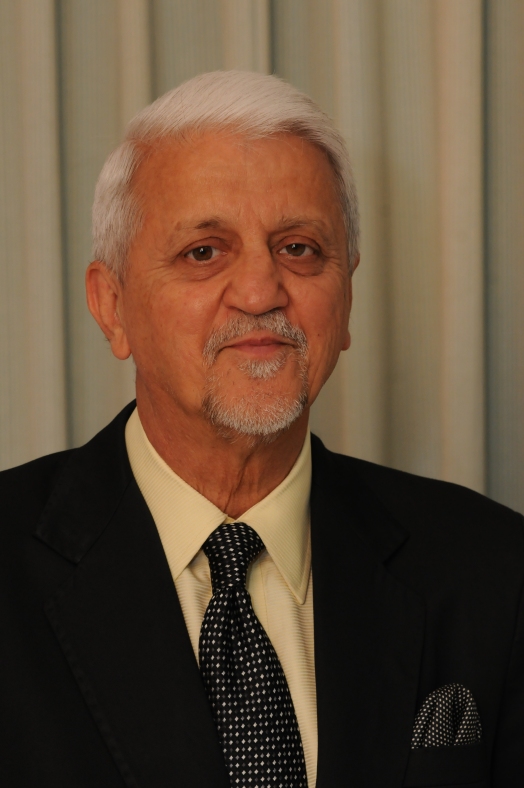 Shri Bharat Vir Wanchoo is a retired officer of the Indian Police Service. With vast experience in the fields of V.V.I.P. Security, Departmental Security, Intelligence and Counter Insurgency, he is regarded as one of the leading professionals and a stalwart in the field of VVIP Security. Shri Wanchoo was the founding member of the elite Special Protection Group and served in that organisation twice, before he was appointed its Chief in 2004. He was Chief of the Special Protection Group for seven years during; and was awarded the Indian Police Medal in 1993 and the President’s Police Medal in 2001. He served as the Governor of Goa from May 4, 2012 to July 7, 2016. Shri Wanchoo’s family includes Smt. Nalini Wanchoo, his wife, a son and a daughter, both of whom are married and two grand children.
Shri Bharat Vir Wanchoo is a retired officer of the Indian Police Service. With vast experience in the fields of V.V.I.P. Security, Departmental Security, Intelligence and Counter Insurgency, he is regarded as one of the leading professionals and a stalwart in the field of VVIP Security. Shri Wanchoo was the founding member of the elite Special Protection Group and served in that organisation twice, before he was appointed its Chief in 2004. He was Chief of the Special Protection Group for seven years during; and was awarded the Indian Police Medal in 1993 and the President’s Police Medal in 2001. He served as the Governor of Goa from May 4, 2012 to July 7, 2016. Shri Wanchoo’s family includes Smt. Nalini Wanchoo, his wife, a son and a daughter, both of whom are married and two grand children.


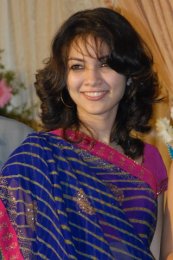 Pushpanjali Sharma is a performing artist and research-scholar in Somatic Education and Transformative Creative Practice. She graduated with a Master’s Degree in Interdisciplinary Studies, with a specialisation in Embodied Studies from Lesley University, Cambridge. She has trained in several dance forms, including ballet, modern, and contemporary dance.
Pushpanjali Sharma is a performing artist and research-scholar in Somatic Education and Transformative Creative Practice. She graduated with a Master’s Degree in Interdisciplinary Studies, with a specialisation in Embodied Studies from Lesley University, Cambridge. She has trained in several dance forms, including ballet, modern, and contemporary dance.

 Sanjeev Sardesai the Primary Promoter of HANDS-ON-HISTORIANS, is a Botany Graduate and was a player in the hospitality industry for 22 years in Senior Executive designations. Having been brought up in a Goan village lifestyle, at Porvorim, he regales in documenting the ethos of the earlier eras vis-a-vis the present times, through the eyes of a transit generation citizen, between earlier dynastic rules & a democratic set-up. Being awarded the President of India Badge in Scouting, his hobbies are photography, angling, arborics and the outdoors; while his passion is being aware and to protect, preserve & promote the heritage of Goa through writings, audio-visual presentations & exhibitions.
Sanjeev Sardesai the Primary Promoter of HANDS-ON-HISTORIANS, is a Botany Graduate and was a player in the hospitality industry for 22 years in Senior Executive designations. Having been brought up in a Goan village lifestyle, at Porvorim, he regales in documenting the ethos of the earlier eras vis-a-vis the present times, through the eyes of a transit generation citizen, between earlier dynastic rules & a democratic set-up. Being awarded the President of India Badge in Scouting, his hobbies are photography, angling, arborics and the outdoors; while his passion is being aware and to protect, preserve & promote the heritage of Goa through writings, audio-visual presentations & exhibitions.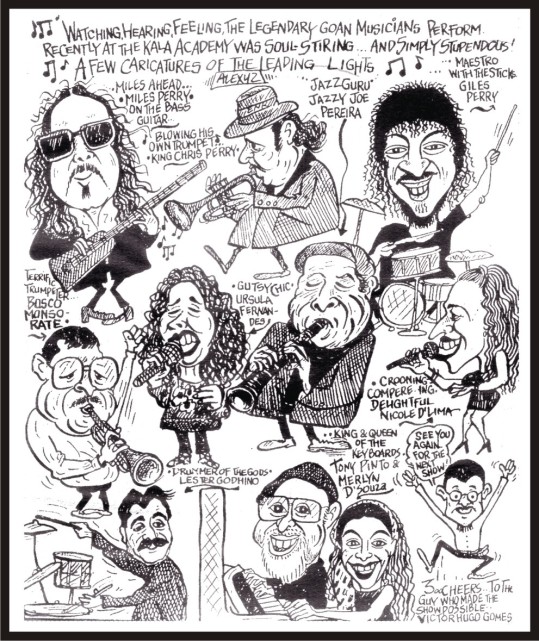

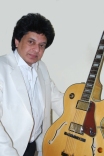 Gerard Machado is a Bangalore-based Jazz musician. Hailing from the musical Vonn Trap family of Mangalore, he began playing guitar at the age of six and has worked and collaborated with many musicians in India and abroad. Gerard has experimented with Indian classical music and has produced Jazz/Fusion and Gospel Albums. Apart from composing jingles and scoring music for numerous feature and animation films, he has performed for “Jazz Yatras”. His band “The Gerard Machado Network” plays Contemporary Jazz incorporating the Blues, Funk, Latin and Indian Rhythms.
Gerard Machado is a Bangalore-based Jazz musician. Hailing from the musical Vonn Trap family of Mangalore, he began playing guitar at the age of six and has worked and collaborated with many musicians in India and abroad. Gerard has experimented with Indian classical music and has produced Jazz/Fusion and Gospel Albums. Apart from composing jingles and scoring music for numerous feature and animation films, he has performed for “Jazz Yatras”. His band “The Gerard Machado Network” plays Contemporary Jazz incorporating the Blues, Funk, Latin and Indian Rhythms.



